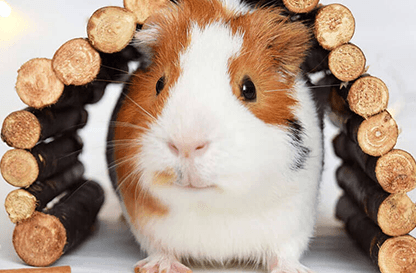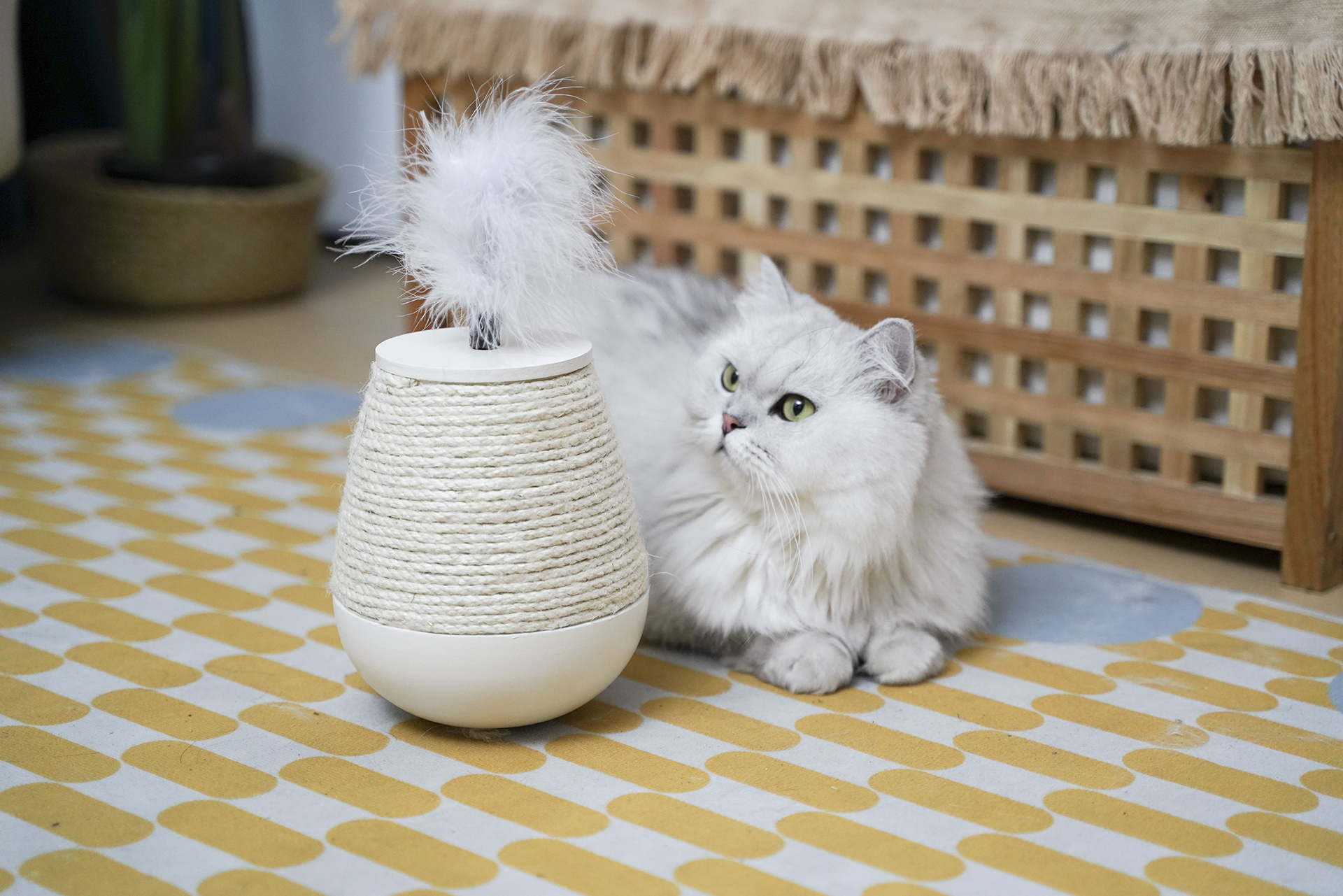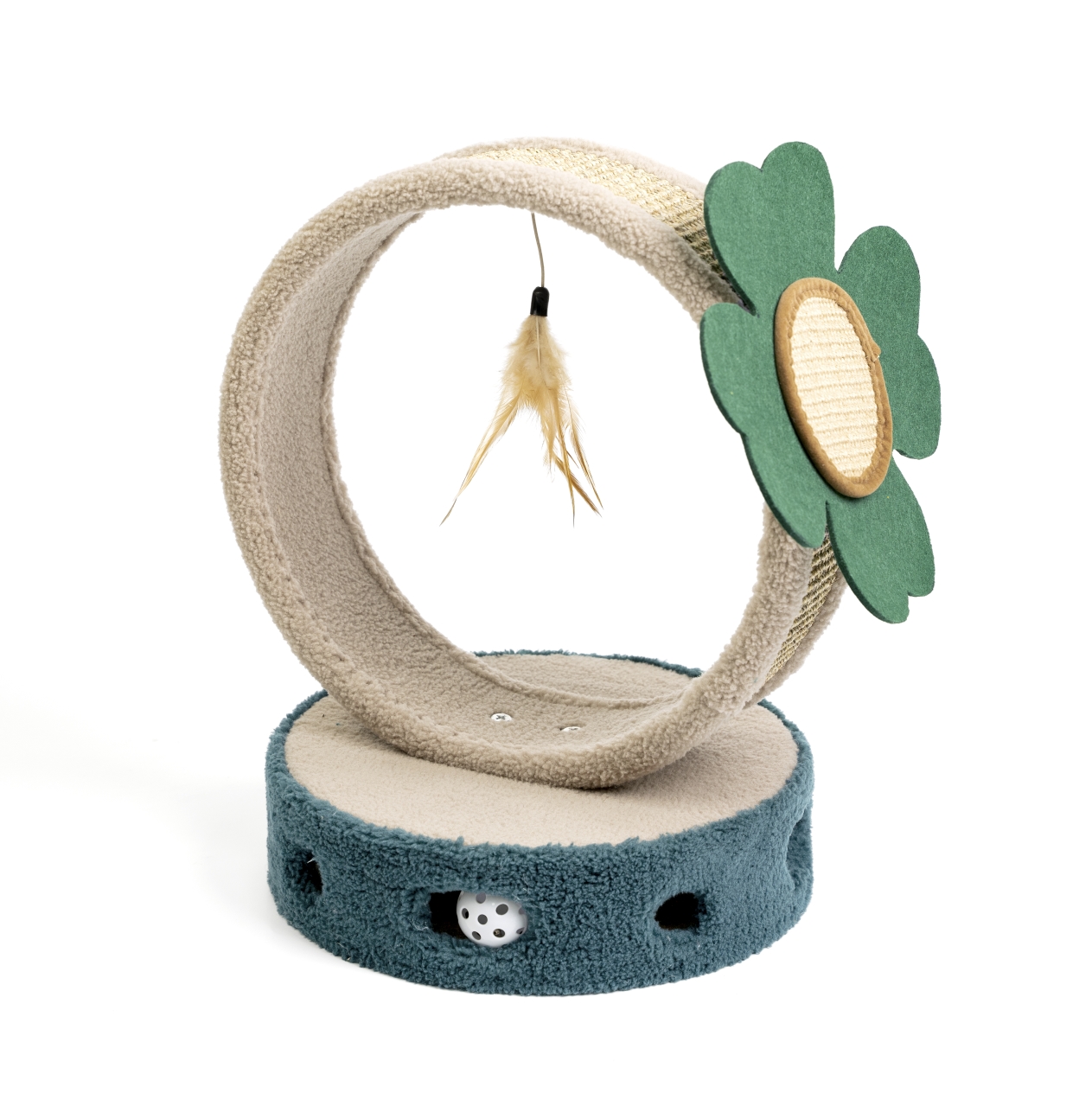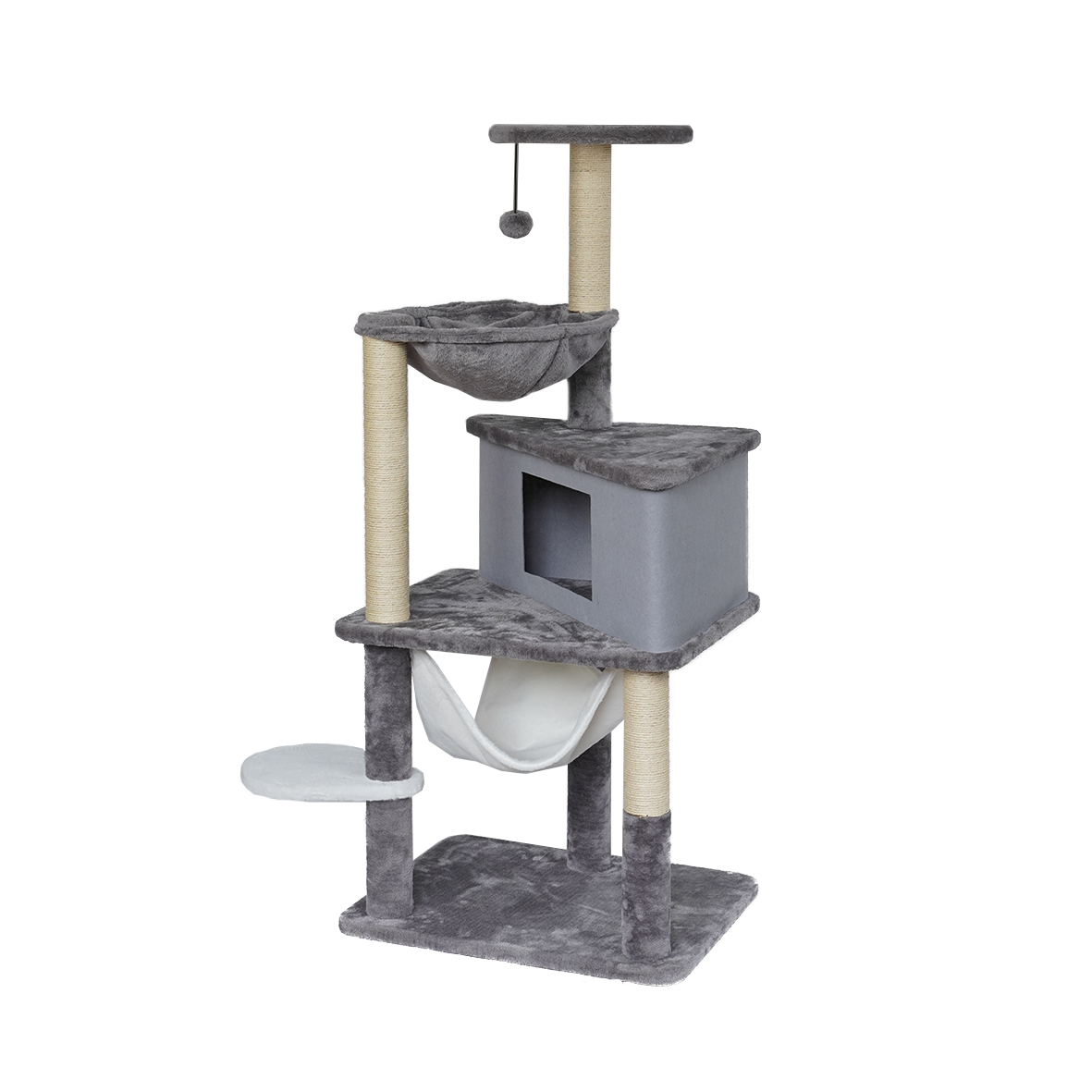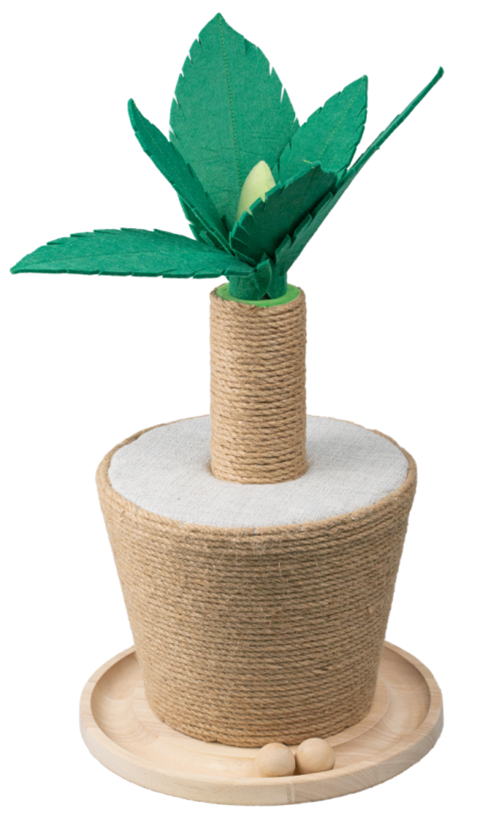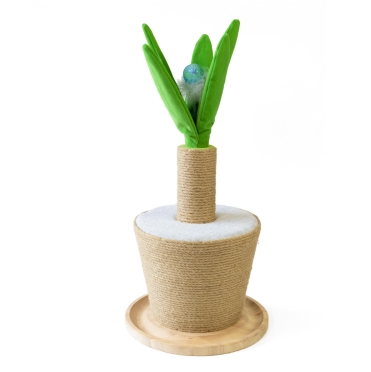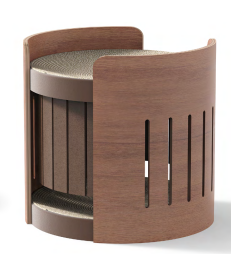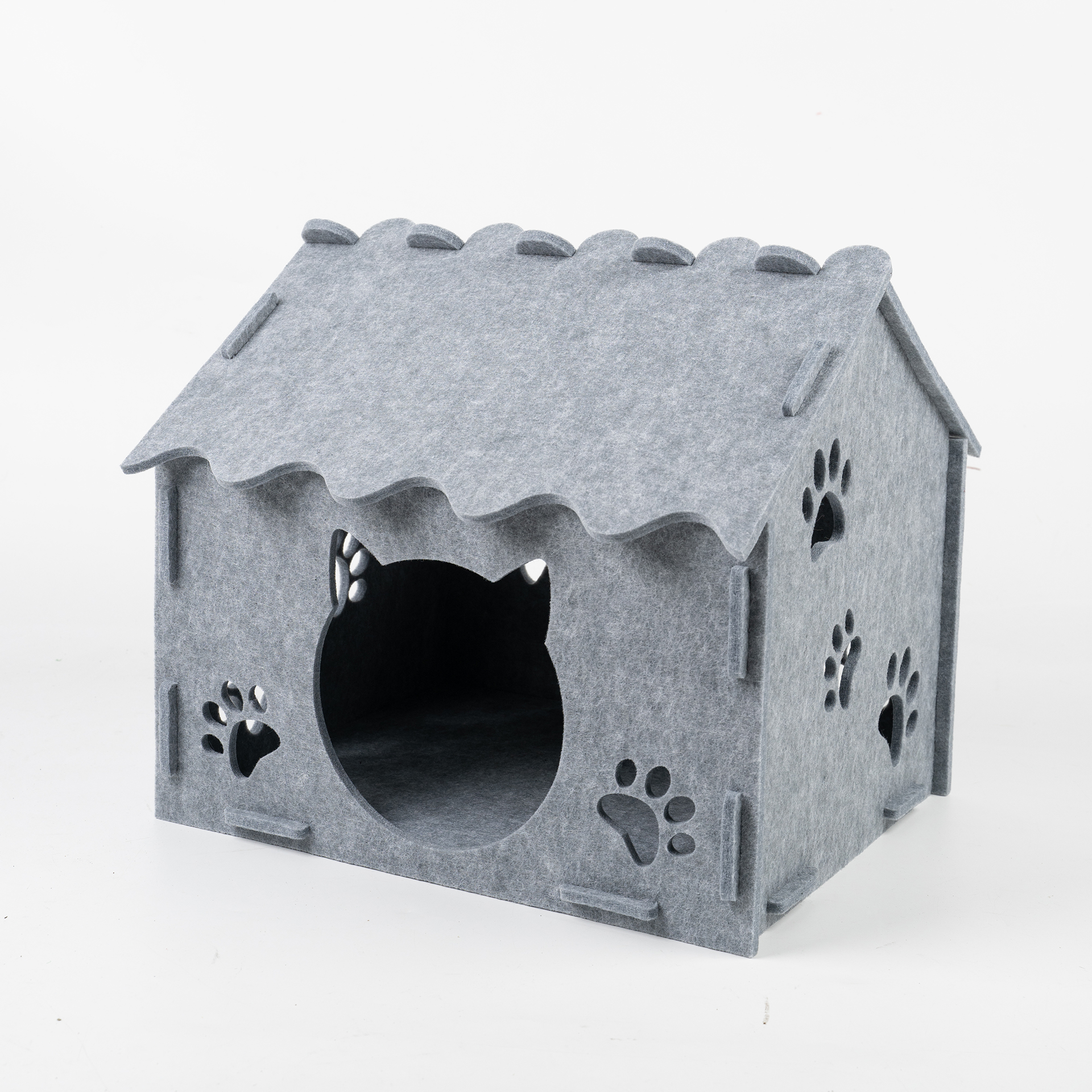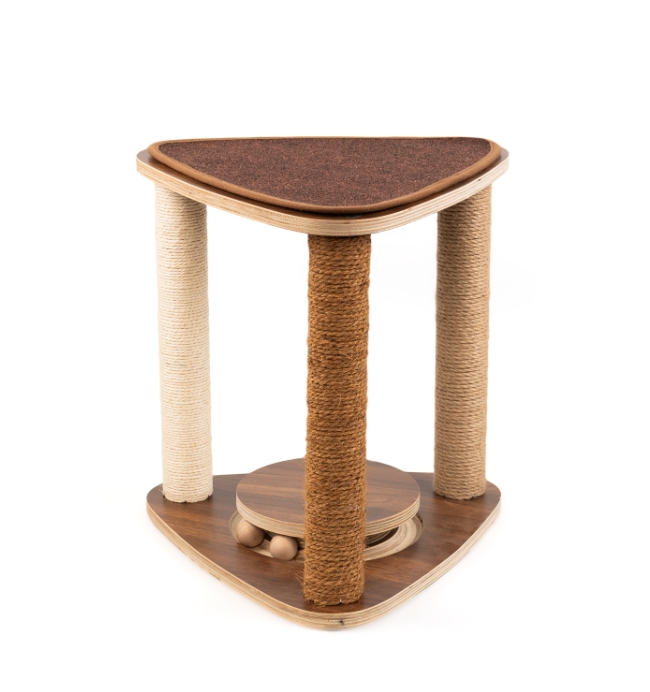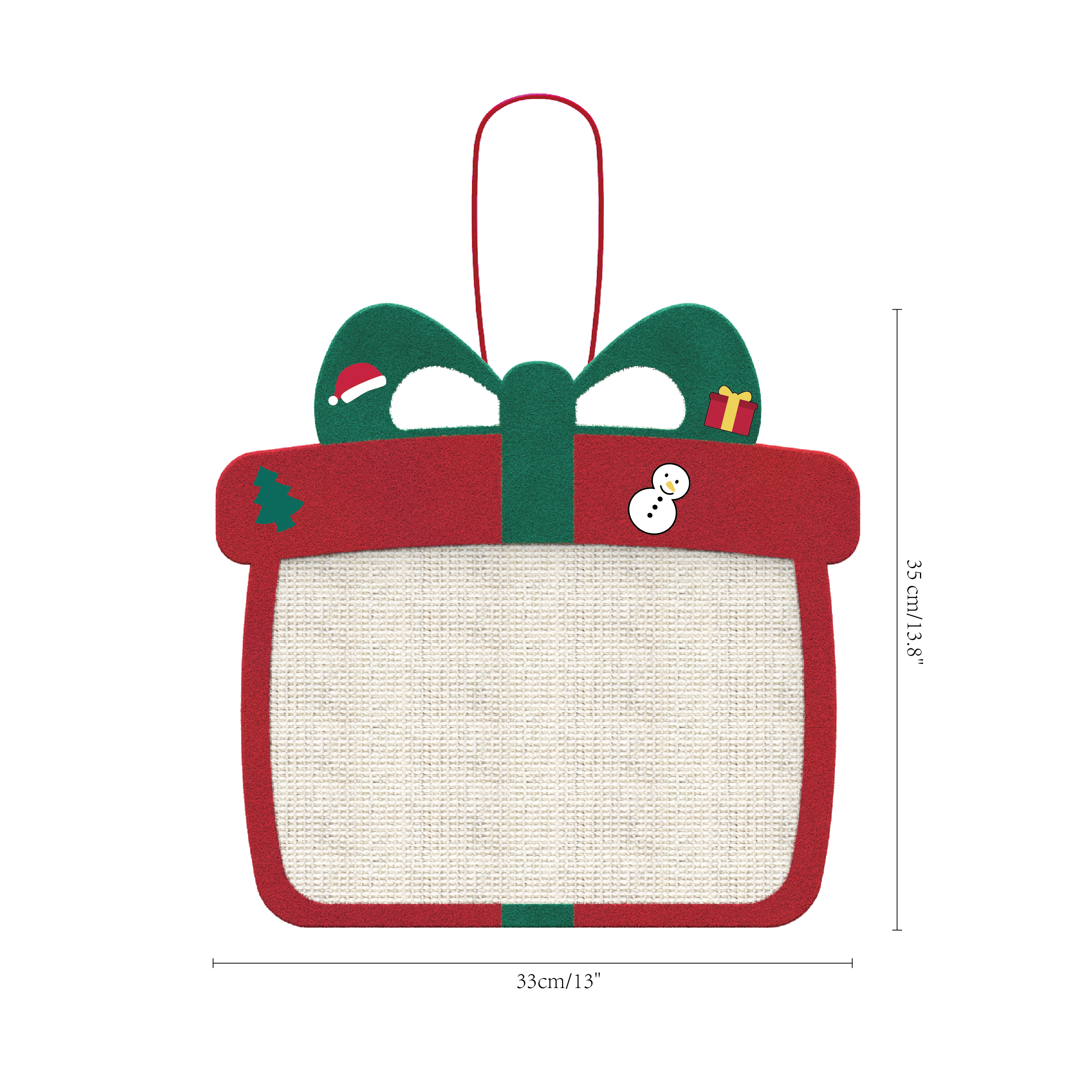Sentian Pet is based on natural materials, and its products are widely used in solid wood, sisal, seaweed, corn leaves and other environmentally friendly materials, which are deeply loved by customers and consumers.
Cat scratching pads play a vital role in cat-raising households. As a pet product, it can not only effectively protect furniture and floors from damage caused by cat scratching, but also meet the natural scratching needs of cats. Choosing the right material for cat scratching pads is a key factor in ensuring their effectiveness and durability.
The Importance of Understanding Cat Scratching Behavior
Scratching is an instinctive behavior of cats, mainly used to sharpen claws, mark territory, and relieve stress. A deep understanding of cats' scratching needs is crucial to choosing the right scratching pad material. Scratching not only helps remove aging claw shells, but also promotes the healthy development of claws. Therefore, the material of the scratching pad must be able to provide sufficient scratching sensation while having good durability to meet the daily needs of cats.
Analysis of Common Cat Scratching Pad Materials
There are many types of cat scratching pad materials available on the market, and each material has its own unique advantages and disadvantages. The following are several common cat scratching pad materials and their characteristics:
Cardboard: Cardboard scratching pads are the most common and affordable choice. They are light and easy to use and can attract cats to scratch. The texture of cardboard is in line with cats' scratching habits, but its service life is short and is usually suitable for disposable use.
Hemp rope: Hemp rope scratching pads are popular for their durability, especially for cats who like to scratch vigorously. Hemp rope has a texture close to the natural environment, which can effectively attract cats to scratch. Although relatively expensive, its durability and scratching experience make it the first choice of many cat owners.
Cloth: Cloth scratching pads are usually softer and suitable for kittens or older cats. They provide a gentle scratching experience, but they are less wear-resistant and may not be suitable for cats with strong scratching power.
Synthetic materials: Some scratching pads are made of synthetic materials such as nylon or polyester, which are more durable and waterproof, suitable for use in wet environments, and easy to clean.
Natural materials: Natural materials such as wood or straw can provide a good scratching experience and have certain environmental characteristics. Although these materials are more expensive, they are often more durable and comfortable.
Comprehensive consideration of durability and safety
When choosing scratching pad materials, durability is an important factor that cannot be ignored. Cats' scratching behavior can cause wear and tear on scratching pads, so choosing durable materials can significantly extend the life of the scratching pad. Durable scratching pads not only reduce the cost of frequent replacement, but also provide a stable scratching environment for cats, promoting their physical and mental health.
Safety is also crucial. Make sure the selected materials are non-toxic and harmless to protect your cat's health. When purchasing, it is recommended to check the product's safety certification mark to ensure that it meets the safety standards for pet products. In addition, a high-quality cat scratching pad should also have good anti-slip properties to prevent accidental sliding during use, ensuring a safer scratching experience for your cat.








 English
English 中文简体
中文简体 Deutsch
Deutsch
